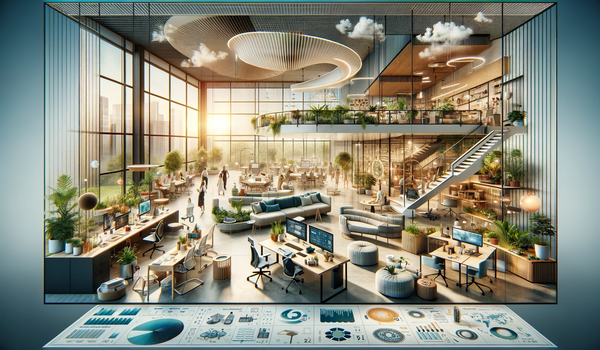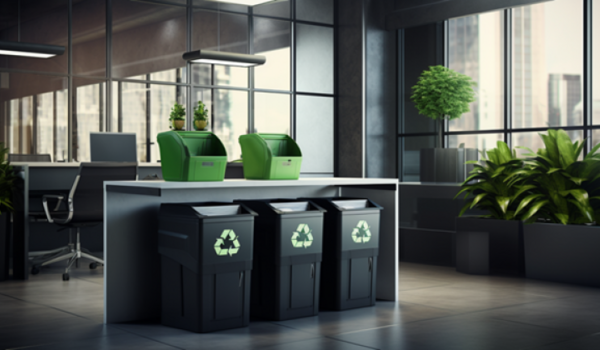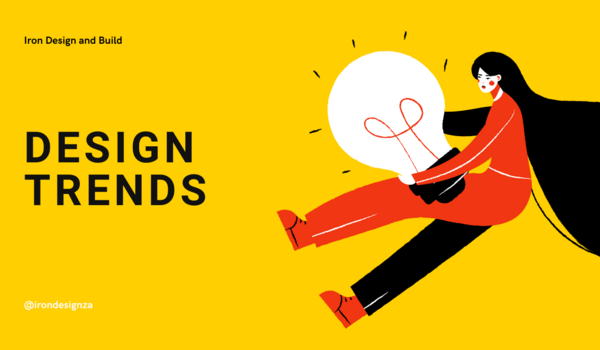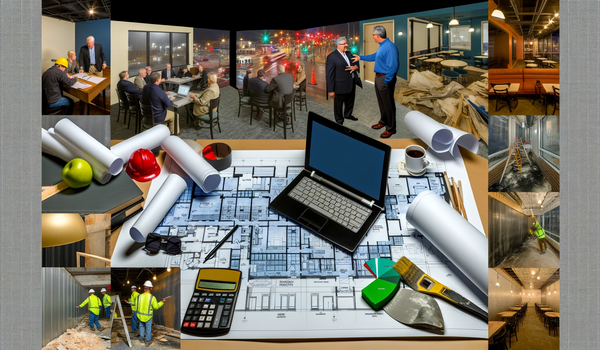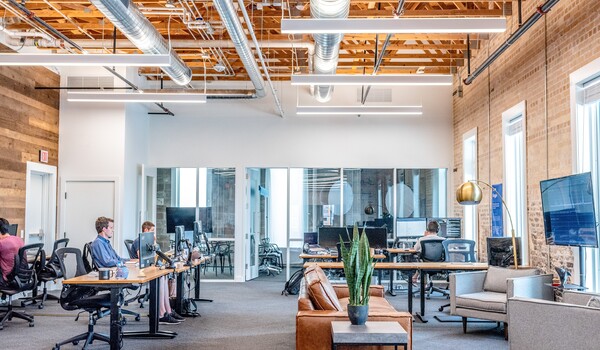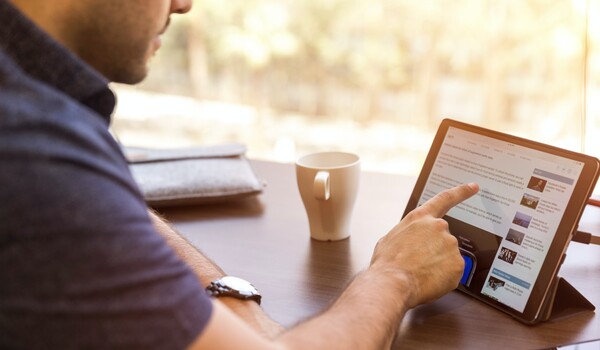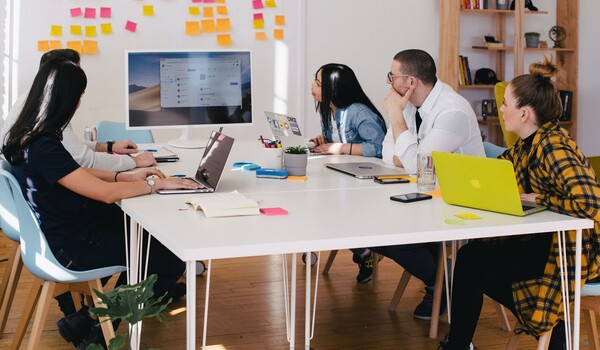
Innovative Modern Office Design Trends for Enhanced Productivity
Explore the latest trends in modern office design, offering innovative solutions for boosting productivity and fostering a creative work environment.
February 2024
Introduction
In today's rapidly evolving workplace, the design of an office goes beyond aesthetics, significantly impacting employee productivity, well-being, and the overall company culture. The traditional office model, characterized by cubicles and isolated workspaces, has given way to dynamic layouts that promote collaboration, flexibility, and a sense of community. This blog post delves into modern office design trends that cater to a business's practical needs and enhance creativity and efficiency. By adopting these innovative strategies, companies can create environments that foster innovation and satisfaction among their workforce.
The Evolution of Office Design
Embracing Open Spaces and Collaborative Environments
Embracing open spaces and collaborative environments within the modern office landscape signifies a significant shift from the traditional cubicle-centric layouts to more fluid and interactive workspaces. This transformation is rooted in the belief that physical openness can lead to greater transparency in communication, fostering an atmosphere where ideas flow freely and collaboration is the norm rather than the exception. By eliminating the physical boundaries segregating employees, companies can cultivate a culture of transparency and inclusivity. This architectural openness encourages spontaneous interactions and discussions, allowing for the cross-pollination of ideas across different teams and departments. Such environments are designed to support a variety of work modes and styles, from individual focus areas to communal gathering spots, reflecting the dynamic nature of modern work processes. The layout of these spaces often includes a mix of private meeting rooms, open desk arrangements, and casual lounging areas, all intended to facilitate both concentrated work and collaborative projects. The psychological impact of these open spaces cannot be understated; they embody a company's commitment to fostering a supportive and team-oriented culture where every employee feels valued and part of a unified whole.
However, the transition to open layouts and collaborative environments extends beyond mere physical restructuring; it requires a holistic approach to workplace design that integrates technology, furniture, and social spaces to support the workforce's diverse needs. Smart office technologies such as wireless connectivity, shared digital workspaces, and interactive whiteboards enhance the collaborative experience, enabling seamless communication and information sharing within the office and with remote team members. Furthermore, the emphasis on collaborative environments highlights the importance of flexibility and adaptability in modern office design. Furniture that can be easily reconfigured for different purposes, from team brainstorming sessions to large group presentations, supports this dynamic approach to work. Additionally, incorporating elements of nature through biophilic design and ensuring ample natural light and ventilation contributes to creating a healthy and stimulating work environment. These design principles enhance productivity and creativity and promote employee well-being by providing spaces that cater to professional and personal needs. In essence, embracing open spaces and collaborative environments reflects a broader trend towards creating more human-centric workplaces, where the physical setting actively supports work's social and emotional dimensions, paving the way for a more engaged and innovative workforce.
Integrating Technology Seamlessly
Integrating technology seamlessly into the fabric of the modern workplace is a cornerstone of creating environments that are productive and adaptable to the rapidly changing landscape of work. The infusion of cutting-edge technology solutions into office designs is deliberate and thoughtful, aiming to streamline workflows and enhance the efficiency of daily tasks. This integration goes beyond providing high-speed internet access and state-of-the-art computing equipment; it encompasses various digital tools and platforms that encourage collaboration, creativity, and connectivity. From cloud computing services that allow team members to access files and collaborate in real-time from any location to smart conference rooms equipped with interactive displays and remote conferencing capabilities, technology is being leveraged to break down physical and temporal barriers to communication and collaboration. Such innovations are pivotal in supporting a mobile workforce, enabling employees to work effectively at their desks, in a meeting room, or halfway across the world. The emphasis on mobility within the workspace reflects the changing dynamics of work, where flexibility and responsiveness are vital drivers of success. By integrating technology seamlessly, companies are not just enhancing their operational efficiency but also creating a work environment that caters to the needs and expectations of a tech-savvy generation of workers for whom digital connectivity is a fundamental aspect of their professional and personal lives.
Moreover, the seamless integration of technology into office design is about creating an intuitive and engaging work environment that anticipates and responds to the needs of its users. Smart office technologies, such as automated lighting and climate control systems, not only contribute to a more sustainable and cost-effective workplace but also enhance the comfort and well-being of employees. Similarly, adopting advanced security systems, including biometric access controls and network security solutions, ensures that the workplace is efficient but also safe and secure. These technological integrations are underpinned by a philosophy that views the office not just as a place of work but as a dynamic ecosystem supporting its inhabitants' well-being and development. This approach acknowledges that technology is not an end but a means to creating a more human-centric workplace where ease of use, efficiency, and personal well-being are inextricably linked. As companies continue to navigate the challenges and opportunities of the digital age, the role of technology in creating productive, adaptable, and innovative work environments will undoubtedly continue to evolve, shaping the future of work in ways that are currently unimaginable.
Personalizing Workspaces for Comfort and Productivity
The evolution of modern office design reflects a deep understanding that personalization plays a crucial role in enhancing employee comfort and productivity. Recognizing that one size does not fit all, contemporary work environments are moving away from the uniformity of traditional office setups to embrace flexible workspaces that cater to their workforce's diverse preferences and needs. This shift towards customization allows employees to tailor their work environments to suit their working styles and personal comfort levels, thereby boosting their efficiency and overall job satisfaction. Flexible workspaces range from adjustable desks and ergonomic seating options to personalized lighting and temperature controls. This level of customization acknowledges each individual's unique physical and psychological needs, offering them the tools and environment necessary to perform at their best. The ability to adjust one’s workspace enhances physical comfort and fosters a sense of ownership and belonging among employees, which can lead to increased engagement and loyalty.
Moreover, the concept of personalizing workspaces extends beyond mere physical adjustments to include access to various work settings within the office environment. Modern office designs often feature a blend of private focus areas, collaborative spaces, and relaxation zones, providing employees with the freedom to choose where and how they work best. This approach supports the natural ebb and flow of the workday, allowing employees to transition seamlessly between tasks that require concentration and those that benefit from collaboration or a change of scenery. Integrating technology that supports mobile working and remote collaboration further enhances this flexibility, enabling employees to stay connected and productive regardless of their physical location. The emphasis on personalization and flexibility within the workplace is a testament to the changing nature of work, where employee well-being and autonomy are recognized as critical drivers of innovation and success. By investing in workspaces that can be customized to meet the individual needs of employees, companies are not only creating more comfortable and productive environments. Still, they are also signalling their commitment to supporting the holistic well-being of their workforce.
Prioritizing Wellness Through Biophilic Design
Prioritizing wellness through biophilic design in office spaces is an approach that resonates deeply within the South African landscape, where the natural environment plays a significant role in the cultural and social fabric of the country. Biophilic design connects building occupants more closely to nature and has found fertile ground in South Africa's rich biodiversity and stunning natural vistas. By integrating elements such as indigenous plants, maximizing natural light, and creating accessible outdoor spaces, offices in South Africa are leveraging the country's natural beauty to enhance employee wellness and productivity. Integrating the natural environment into the workplace goes beyond aesthetic appeal; it taps into the innate human need to connect with nature, thereby reducing stress, enhancing mood, and fostering a sense of well-being among employees.
Moreover, implementing biophilic design in South Africa is about bringing the outdoors in and creating a sustainable and contextually relevant work environment. Utilizing local flora in office spaces supports local ecosystems and helps develop a sense of place and cultural identity within the workplace. Furthermore, incorporating natural light and ventilation reduces energy costs and mirrors the South African ethos of harmony with nature and sustainable living. Outdoor spaces, such as terraces or gardens, are designed not just for aesthetic purposes but as functional areas where employees can work, hold meetings, or take breaks, thereby blurring the lines between indoor and outdoor work environments. This approach to office design reflects a broader commitment to employee wellness, acknowledging that a healthy and productive workforce is in tune with its natural surroundings. In the context of South Africa, where the landscape is varied and vibrant, biophilic design offers a unique opportunity to enhance the workplace in culturally significant ways that benefit employee well-being.
Designing for Flexibility and Adaptability
Designing for flexibility and adaptability in modern office spaces is a forward-thinking approach that acknowledges today's work environment's dynamic and ever-evolving nature. This concept is especially pertinent in the contemporary business landscape, where the pace of change is rapid, and organizations must remain agile to stay competitive. By creating workspaces that can be easily reconfigured for different purposes, companies can support a variety of work styles and activities, from individual-focused tasks to large collaborative projects. This level of adaptability maximizes the utility of the physical space and ensures that the workplace can evolve in response to the changing needs of the business and its employees. The flexibility of modern office designs includes movable partitions, modular furniture, and technology-integrated spaces that can seamlessly transition from a traditional office setup to a creative brainstorming area or a casual networking space.
Moreover, this focus on flexibility and adaptability extends to supporting a hybrid work model, which has become increasingly prevalent. This model necessitates workspaces that can accommodate in-person and remote participants, ensuring that collaboration is effective and inclusive, regardless of where team members are. The ability to adapt the office layout to facilitate a hybrid work environment demonstrates a deep understanding of the current trends in work practices and a commitment to fostering a supportive and productive work culture. Additionally, by designing workspaces that can be easily adjusted to meet future demands, businesses can future-proof their offices, making them resilient to shifts in work patterns, technological advancements, and organizational growth. This approach not only enhances the day-to-day functionality of the office but also represents a strategic investment in the long-term viability and success of the organization. In essence, designing for flexibility and adaptability is about creating spaces that are not just places of work but dynamic environments that support the continuous growth and transformation of the business.
Conclusion
The modern office is more than just a workplace; it's a dynamic environment that influences creativity, productivity, and employee satisfaction. By embracing the latest trends in office design, businesses can create spaces that meet the practical demands of their operations and inspire and engage their workforce. The future of office design is about creating a sustainable, flexible, and collaborative environment that supports the well-being of employees and drives the business's success.
FAQs
Q: How does office design impact employee productivity? A: Office design significantly affects employee productivity by influencing their comfort, satisfaction, and collaboration ability. Well-designed spaces can reduce stress, enhance focus, and foster a positive work environment.
Q: What is biophilic design? A: Biophilic design incorporates natural elements into the built environment, aiming to improve occupant connectivity to the natural environment, which can lead to increased well-being and productivity.
Q: How can technology be integrated into office design? A: Technology can be seamlessly integrated through smart furniture, wireless charging stations, and collaborative digital tools that support flexibility and mobility within the workspace.
Q: Why is flexibility necessary in modern office design? A: Flexibility allows for the adaptation of spaces to various needs and activities, supporting a dynamic work environment and accommodating the evolving needs of businesses.
Q: Can office design contribute to a company's culture? A: Yes, office design plays a crucial role in shaping company culture by facilitating collaboration, transparency, and a sense of community among employees, reflecting the company's values and mission.
Share insight:
